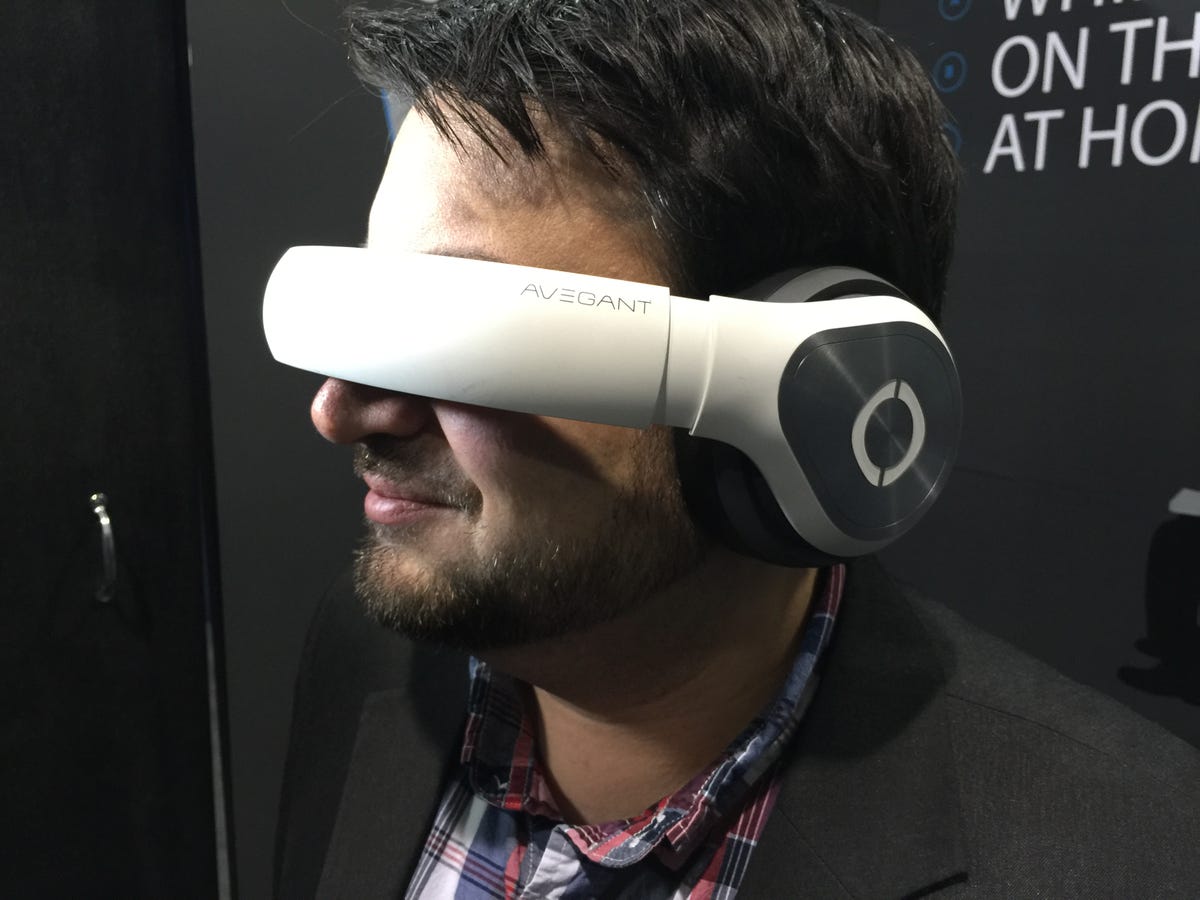
Richard Peterson/CNET
Somewhere between VR headsets and smart glasses, there are “media goggles;” for lack of a better word, headsets that double as mobile displays. These types of things have been lurking around the dark corners of electronics-convention show floors for well over a decade, but thanks to the rise of head-mounted wearables and VR, they’ve made a return.
Imagine a pair of large headphones with eyewear embedded inside the headband, and you have the general idea: you wear these gadgets over your eyes, in cyborg-style mode. I tried two of the more promising versions in Las Vegas last week at CES. Both are arriving this year, and both are nearly virtual reality headsets…but really, they’re made to mainly view videos and play games.
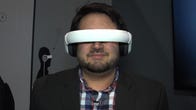

Now playing:
Watch this:
Avegant Glyph looks like headphones, but beams movies…
1:29
The Avegant Glyph made its debut last year; the optical technology is innovative, because it uses DLP display technology and micromirrors to beam an image right into your eye. The 720p image ends up crisper and brighter than the typical tiny screen-in-your-face, without some of the extra-pixilated “screen door” effect in lens-magnified virtual-reality headsets. I tried the latest prototype, and it played a section of “How to Train your Dragon 2,” but with some lines of interference during my demo. It looks like a tiny movie theater has been put over your eyes — the screen sits at the back of a little box-like zone, creating a sensation of distance.
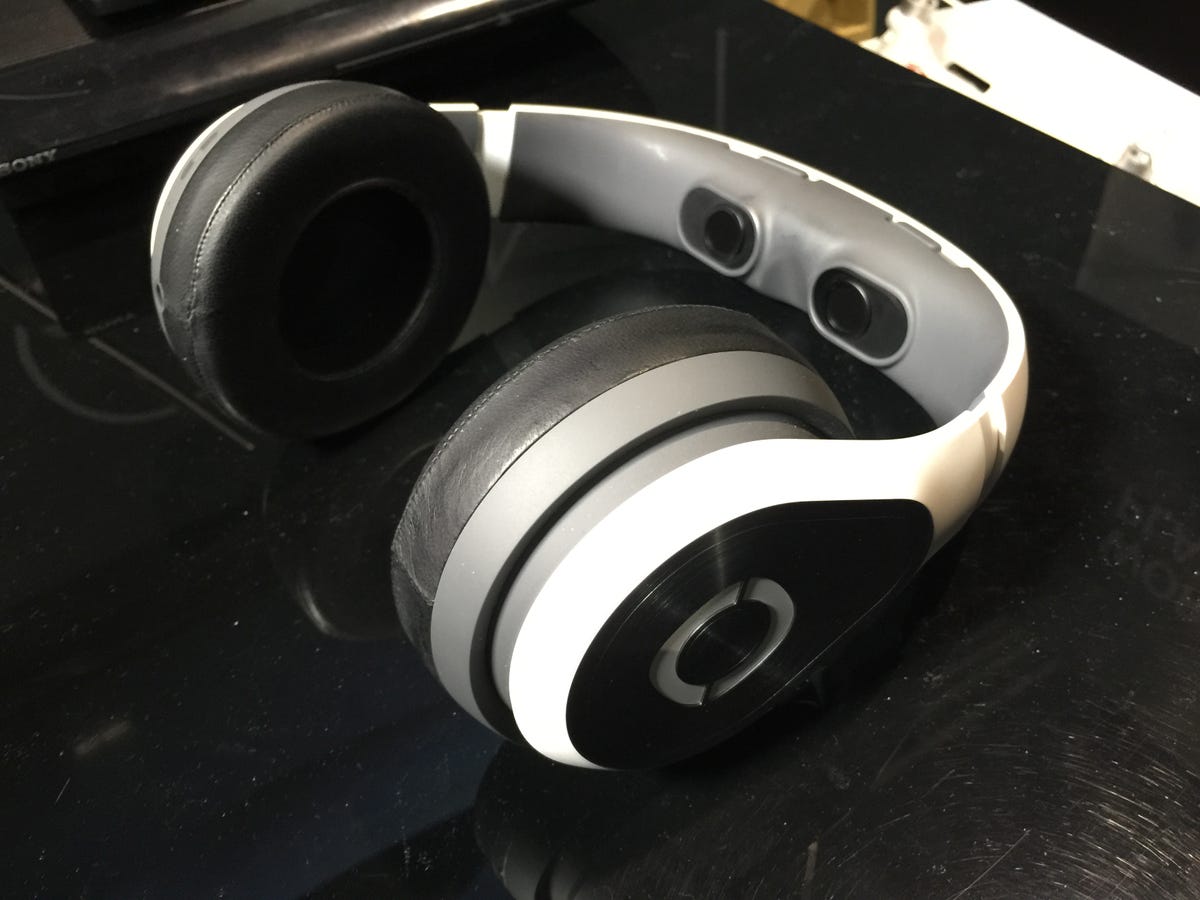

Scott Stein/CNET
The Glyph has pretty boomy, crisp audio, too: these are definitely geared towards entertainment. But, they could be used for some VR-type gaming and augmented-reality use cases, in theory: an inner accelerometer and gyro allow for head-tracking, and in a 360-degree video demo I was able to look around me…but the effect was far less fluid than with a pair of VR goggles like Samsung Gear VR. Avegant is working on a wider field-of-view version that could offer a more immersive viewing range, for use cases like controlling drones.
The Avegant Glyph uses standard HDMI input and can display 2D or 3D content from a phone (iPhone, Android, or other), game console, TV, or whatever else you can dream up. It’s a head-mounted 720p display with benefits. I tried it out with my iPhone and played a few Netflix shows.
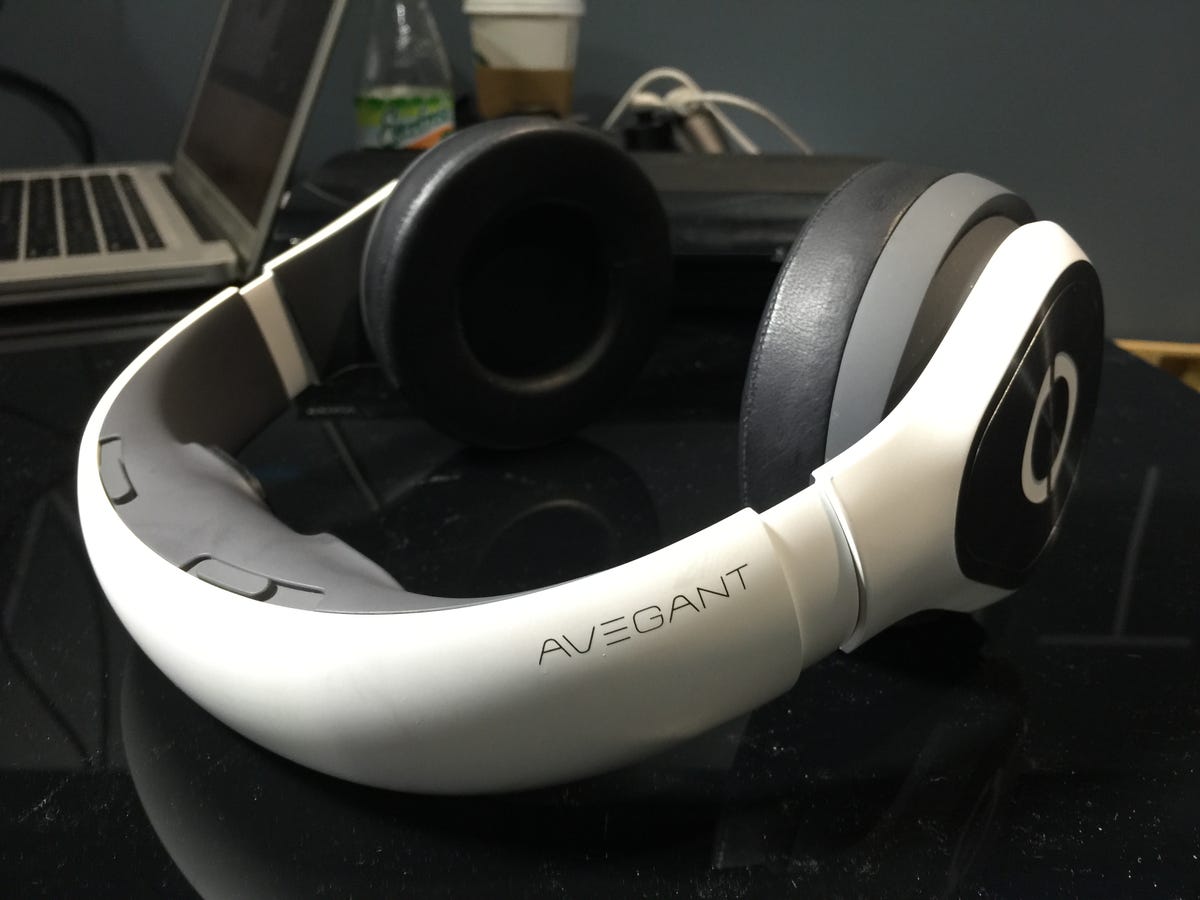

Scott Stein/CNET
Each eyepiece can be adjusted separately (focus and pupillary distance), but they didn’t quite work with my very bad -9 vision: I had to squint a bit. They’re better than a year ago, but I’m hoping they’ll eventually work perfectly with my eyes, too.
The Glyph’s final design will be sleeker than the bulky, nose-hurting prototype I tried for a few minutes. The clean lines and make it look like a pair of Beats or similar-type studio headphones with eyewear baked into the top headband. They’ll be available in the fall, and can be pre-ordered for $499 ($599 after January 15).


Now playing:
Watch this:
Vuzix iWear video headphone slaps a 720p screen on your…
1:04
Vuzix has a similar product in the works: its iWear V-720 gaming headset is also a bulky type of headphone-meets-eyewear headset, except the iWear uses an LCD 720p display instead of the Avegant’s DLP technology. The iWear’s design feels more plastic and “gamer”-ish, and that’s no accident: they’re being marketed more as the ultimate mobile gaming accessory, with an Nvidia Shield-branded relationship already underway that will package both products together, possibly, later this year (at CES, it’s always hard to sense reality).
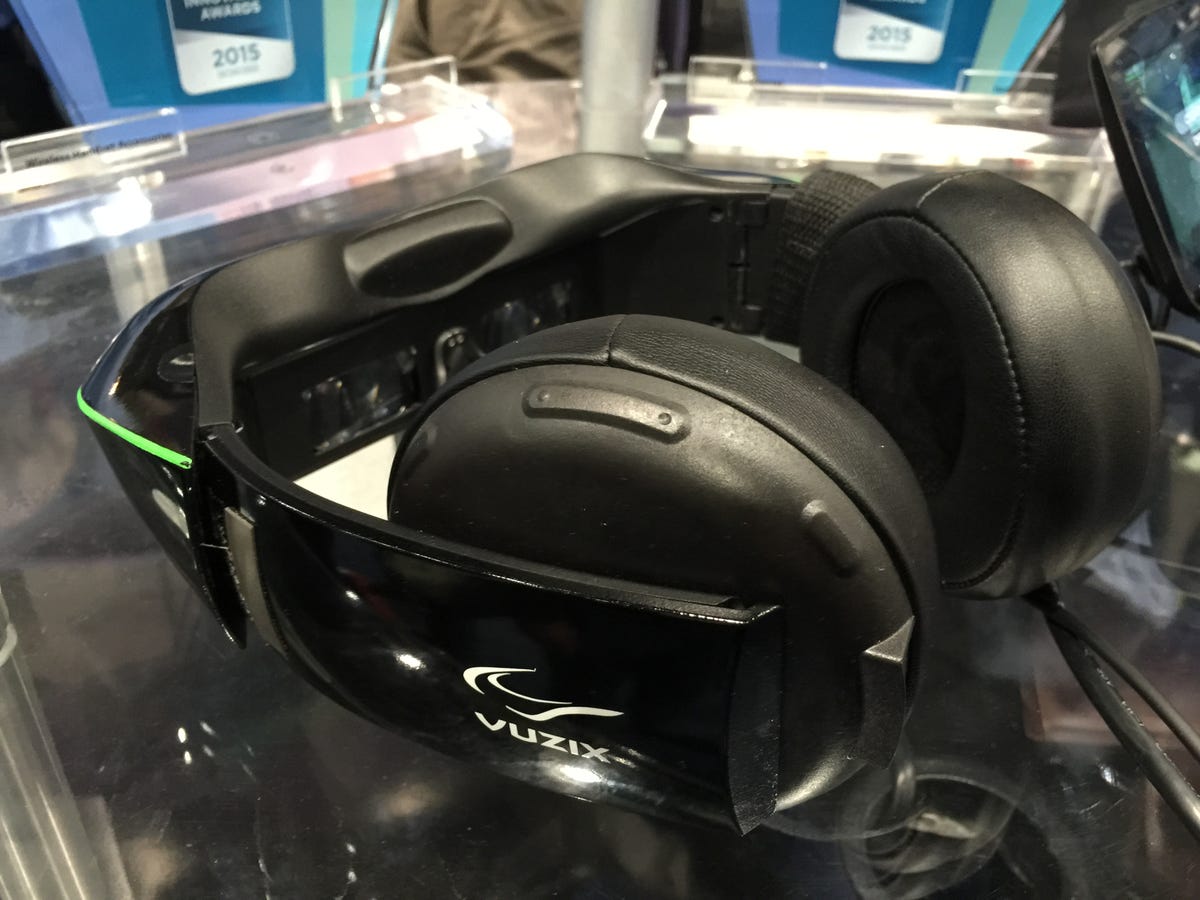

Scott Stein/CNET
The Vuzix iWear unit also works via HDMI input, allowing phones, laptops or tablets to port in. Like the Glyph, they can display 2D or 3D content and also have head-tracking tech. I played a game on the Shield while connected to the Vuzix headset, and it worked out pretty well: the screen hovered in front of my face like a giant TV screen, and the 720p audio/video experience was better than average. The audio quality was plenty loud, too. In fact, it was close enough to the quality of the Avegant Glyph that it made me wonder how picky people will be about head-mounted entertainment eyewear. These will also cost around $500.
I don’t know if I’d ever need a pair of video headphones, or even want one. If they were affordable and comfortable enough, maybe. Right now, these aren’t. But the dream of kicking back and wearing one of these on a long plane flight is still alive — at trade shows, at least.

